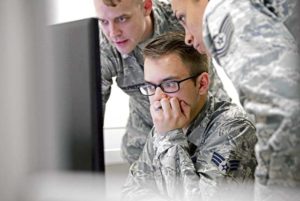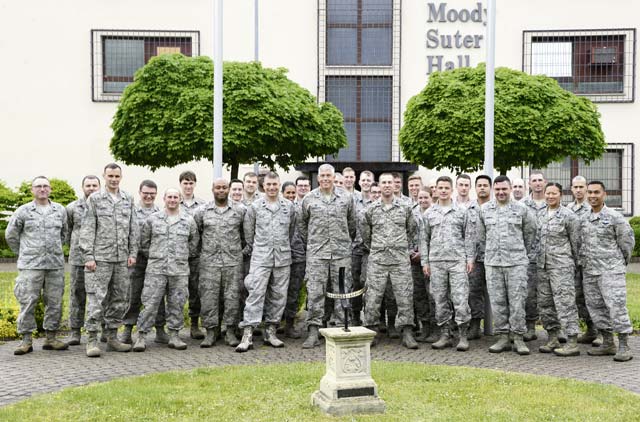
The U.S. Air Forces in Europe Warrior Preparation Center on Einsiedlerhof Air Station, Germany closed the first U.S. Air Forces-Europe – Air Forces Africa cyber-only exercise on May 11.
“The purpose of the exercise was to provide training of mission defense skills and to keep our adversaries out of our information cyberspace,” said Master Sgt. Daidric Young, USAFE cyber integration manager.
Airmen assigned to the 86th Communications Squadron, 52nd Communications Squadron, 31st Communications Squadron, and the 1st Combat Communications Squadron split the exercise in two parts. The first half of the training was a cyber academic workshop teaching Airmen new procedures along with cyber analysis tools used to monitor network activity. The second half of the training was a practical application of the skills learned.
“The experience I’ve gained through this training is great,” said Senior Airman Matthew Gorman, 86th Communications Squadron cyber defense analyst. “We don’t get to practice like this too often; so we’re given this opportunity to transition from a traditional ‘comm role’ of opening and closing tickets to active cyber defense.”
The two-week-long exercise, Tacet Venari, latin for silent hunt, pooled the Airmen together forming mission defense teams (Blue Team) tasked with immobilizing adversaries through cyber defense.
90th Cyberspace Operations Squadron Airmen, located at Joint Base San Antonio-Lackland, Texas, remotely played the role as the acting adversary (Red Team) challenging the cyber defenders with a variety of attacks.
Blue team Airmen monitored and defended simulated mission essential network assets against compromise.
“This exercise was a great example of cyber Airmen sharpening their skills to better harden USAFE cyber key terrain,” said Col. Jonathan Sutherland, USAFE A6 director and chief information officer. “While we’re in the early stages of developing our cyber defense capability in theater, I’m excited about the momentum we’ve garnered; not only for future exercises, but for an eventual transition to base cyber squadrons with active cyber defense as a core mission area.”
Exercise participants were able to train on activities without risking assets, through the use of network monitoring tools, vulnerability network scanners, and other defense analysis tools, affording operators the confidence to execute in real-world scenarios.
“These training scenarios are the key to preparing our mission defense teams,” said Young. “In this environment we’re afforded real-world training without risking mission assets.”
Ensuring information is accurate, complete, and secure, mission defense teams bring new cyber capabilities to USAFE.



